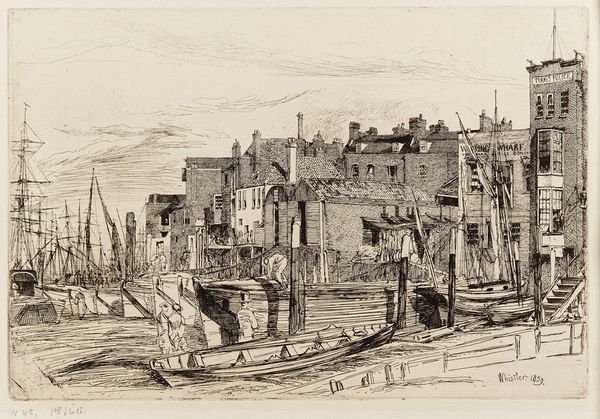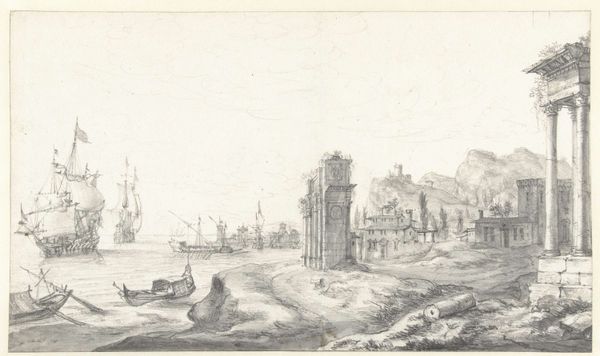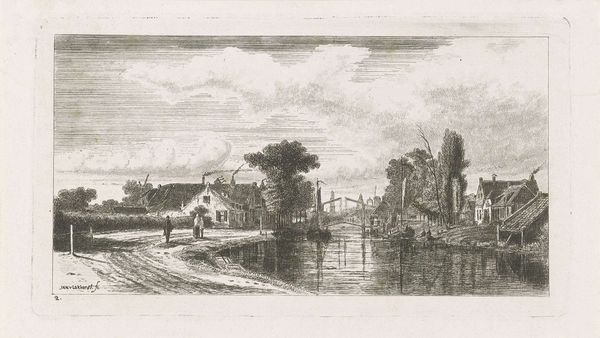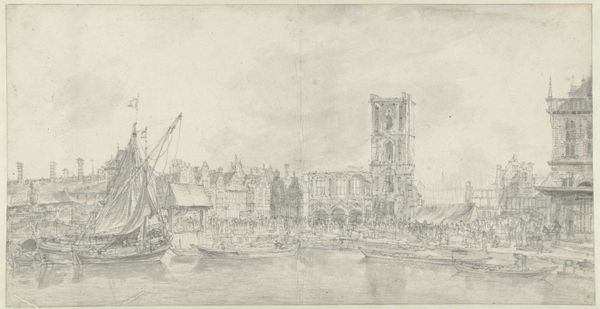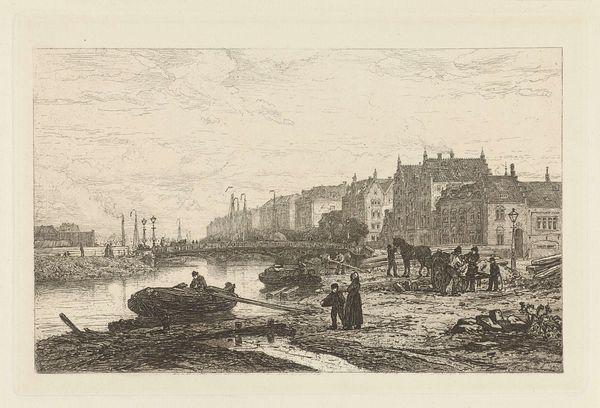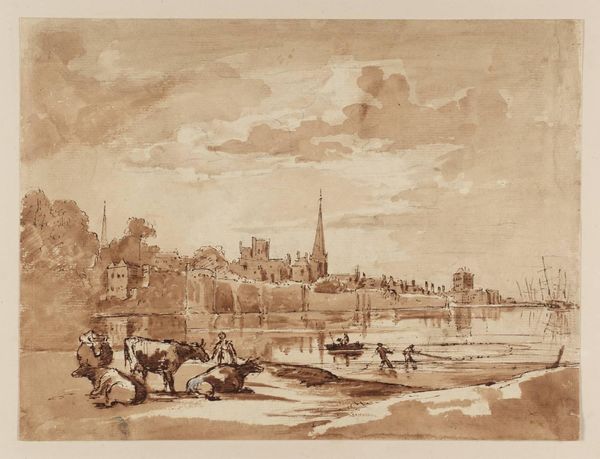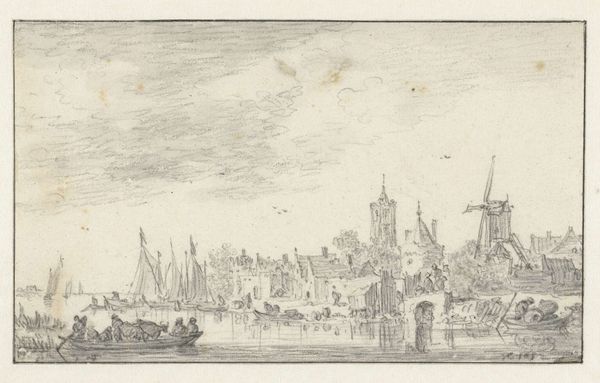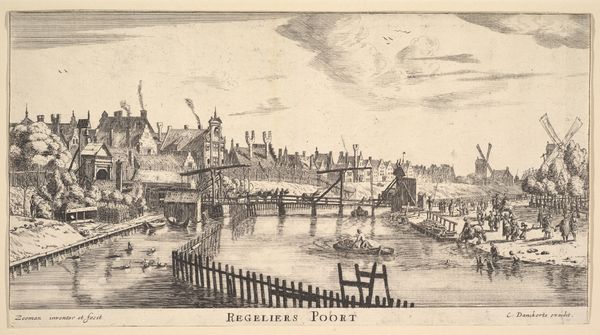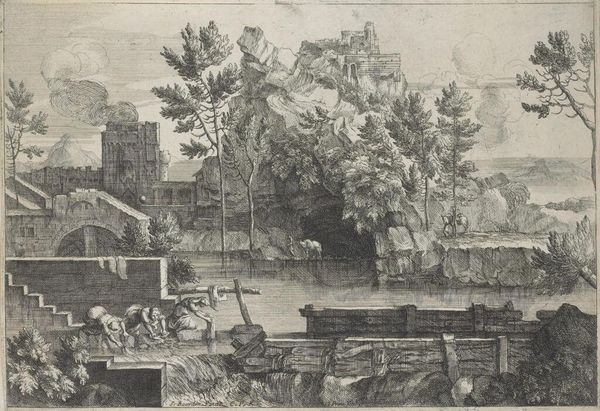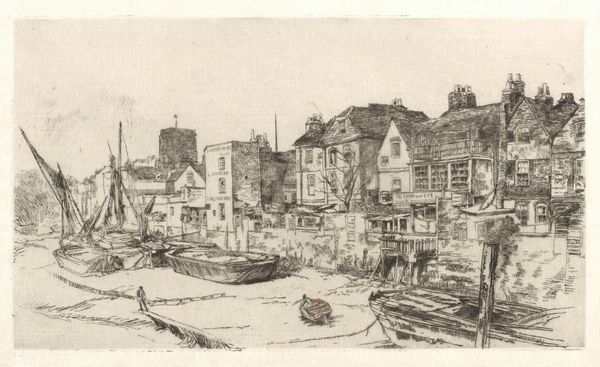
Dimensions: plate: 15.2 Ã 22.9 cm (6 Ã 9 in.) sheet: 17.5 Ã 25 cm (6 7/8 Ã 9 13/16 in.)
Copyright: CC0 1.0
Curator: Whistler's "Thames Police," a work residing here at Harvard Art Museums, gives us a glimpse into 19th-century London. What is your immediate impression? Editor: It feels incredibly intimate, almost like a stolen glance. The delicate etching lines create a hushed atmosphere, focusing on the working waterfront. Curator: The Thames was the lifeblood of London. Whistler, drawn to its industrial pulse, captured the raw, unvarnished reality of the dockworkers and the river police who patrolled it. Editor: The material choices speak volumes. Etching, a readily available medium, democratized art-making. Its connection to print culture enabled wider distribution and engagement. Curator: Exactly. Whistler challenged the established art world by depicting everyday scenes and embracing the print medium. He elevated these subjects to fine art, inviting viewers to contemplate the beauty in the mundane. Editor: And think about the labor involved! Every line painstakingly etched, reflecting the hard work depicted in the image itself. It makes you consider the relationship between artistic labor and the labor on the docks. Curator: Indeed. The image reminds us that art isn't created in a vacuum, but is responsive to societal forces, shaped by the very world it reflects. Editor: It's fascinating how this small print opens up so many larger conversations about art, labor, and society.
Comments
No comments
Be the first to comment and join the conversation on the ultimate creative platform.

